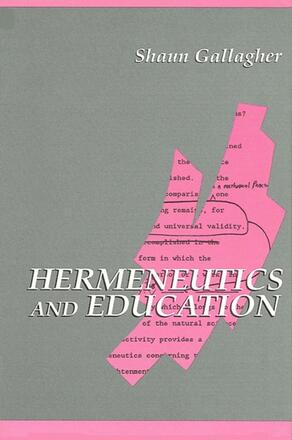
Hermeneutics and Education
Alternative formats available from:
Shaun Gallagher is Associate Professor of Philosophy at Canisius College, and co-editor of the forthcoming book, Merleau-Ponty, Hermeneutics, and Postmodernism, which will be published by SUNY Press.
Reviews
"This is a pathbreaking book. It proposes a fourfold typology of hermeneutics—conservative, moderate, critical, and radical—and unfolds four basic principles in each. Gallagher presents a philosophically careful and solid discussion of each position and four principles central to it, including evaluation of their strengths and weaknesses; then he searches out parallel standpoints in current educational theory and shows whether or how each parallel standpoint can be enriched by hermeneutical reflection. He also dares to suggest some criticisms or limitations of hermeneutical reflection itself based on current learning theory. I think this work and its typology will be widely cited, and quite conceivably could become a bible for educational reform based on hermeneutics. "— Richard Palmer, MacMurray College
"The author succeeds in his objective: showing how a moderate theory of hermeneutics can provide the principles for an educational theory. The author's arguments in defense of his 'moderate theory of education' are clearly expressed, carefully reasoned, and tied to an extremely impressive spectrum of documentation. The breadth of scholarship going into this work, as well as the depth of understanding of the history of hermeneutics and Gadamer's Truth and Method, are superb. The fourfold division of hermeneutical theory is well-formulated, and can stand on its own apart from the context of this work as a insightful contribution to hermeneutics. I believe this work will quickly claim the role of the authoritative work in this area. It can provide an education in hermeneutics for readers inexperienced in the field, as well as offer much for the more well-versed reader to contemplate. It also will challenge educational theorists in the areas discussed to re-think the assumptions behind their beliefs. " — Diane Michelfelder, California Polytechnic State University